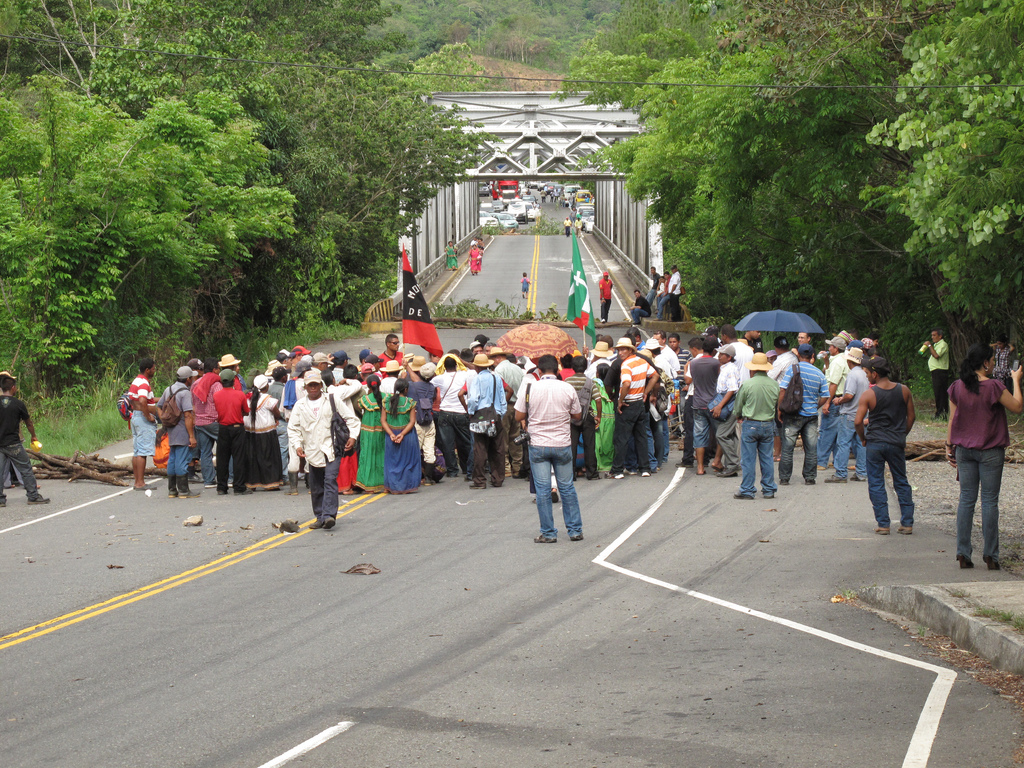Summary
The Barro Blanco Hydroelectric Power Plant Project (CDM ref#: 3237) is a 28.84 MW hydroelectric Clean Development Mechanism (CDM) project on the river Tabasara River in the Chiriqui Province of Panama and was approved in June 2011, despite the concerns local and international NGOs communicated to the CDM Board.
James Anaya, UN special rapporteur on the rights of indigenous people visited Panama in July 2013 and spoke to the Ngöbe. In his report he concludes that there is a strong opposition against the dam among the Ngöbe, and that they were not properly consulted. He also said that the Barro Blanco dam is symbolic for the way indigenous people are treated in Panama when it comes to mining and hydroelectric projects.
| More.. Hydro Power in the CDM |
The water reservoir of the dam is expected to flood land belonging to the Comarca of the Ngöbe-Buglé – a semi-autonomous reservation owned and administered by Panama’s indigenous Ngöbe and Buglé people. More than half a dozen townships along the riverbanks in Ngöbe-Buglé territory will be flooded and the livelihoods of some 5000 Ngöbe farmers who rely on the river for potable water, agriculture and fishing will be negatively and irrevocably impacted. The river beds have very fertile land which is used for agriculture, as well as for the collection of medicinal plants. Moreover, along the river stand cemeteries and traditional sacred places, including three petroglyphs, which will be also flooded. Yet, the project developer Genisa has publicly made misleading claims that the flooded area will be smaller than it actually is and not impact the tribal communities.
Violent repression by President Martinelli against the peaceful Ngöbe protests left three of them dead and more than a hundred wounded. Communications were cut and human rights were severely violated. Minors were beaten and pepper-sprayed while handcuffed. Police raided hospitals to abduct the wounded. There were even reports of detained Ngöbe women raped by police agents, including a 13 year old minor. See: Final Report of Human Rights Fact Finding Mission.
In March 2014, Weni Bagama, a Ngöbe community leader and representative of the Movimiento M-10, raised these concerns directly with the Panamanian government, when she testified at a hearing before the Inter-American Commission of Human Rights. Weni described the impacts of the Barro Blanco project on the Ngöbe community and how their voices have not been heard throughout the process. The Ngöbe community’s fight against the Barro Blanco project is now on the Panamanian government’s agenda.
The project is being financed by European Banks from Germany (DEG) and the Netherlands (FMO).
We believe that the United Nation’s Clean Development Mechanism has the responsibility to uphold human rights. In cases where internationally recognized rights are abused, like in the case of Barro Blanco, we believe that the CDM must take responsibility and action. Barro Blanco also shows that the current rules for stakeholder involvement need to be strengthened and clarified to ensure that people affected by the project are being consulted.
What we are calling for:
|
Read more about this project from our colleagues:
- Letter to the CDM Board by M-10, ACD and ASAMCHI
- Letter on FMO support for Barro Blanco in Panama
- NGO Letter to UN Independent Expert on Human Rights & the Environment: Panama’s Barro Blanco dam project
- Letter to UN Special Rapporteur on the Rights of Indigenous Peoples: Request to meet about the Barro Blanco project during July 2013 visit to Panama
- Press Release: UN Special Rep on Indigenous Peoples’ Rights Asked to Investigate Barro Blanco Project (CIEL, CIAM, EarthJustice)
- Massive Protests against Barro Blanco Hydropower Project in Panama
- Final Report of Human Rights Fact Finding Mission (in Spanish)
- Prensa.com article: Imprecisiones en Barro Blanco (in Spanish)
- International Rivers article: Illegal Construction of CDM Project Barro Blanco Continues
- Presentation: Proyectos MDL en Panama: Hidroelectrica Barro Blanco
- Comments submitted during public consultation: by Oscar Sogandares, by Osvaldo Jordan (ALIANZA PARA LA CONSERVACIÓN Y EL DESARROLLO)







